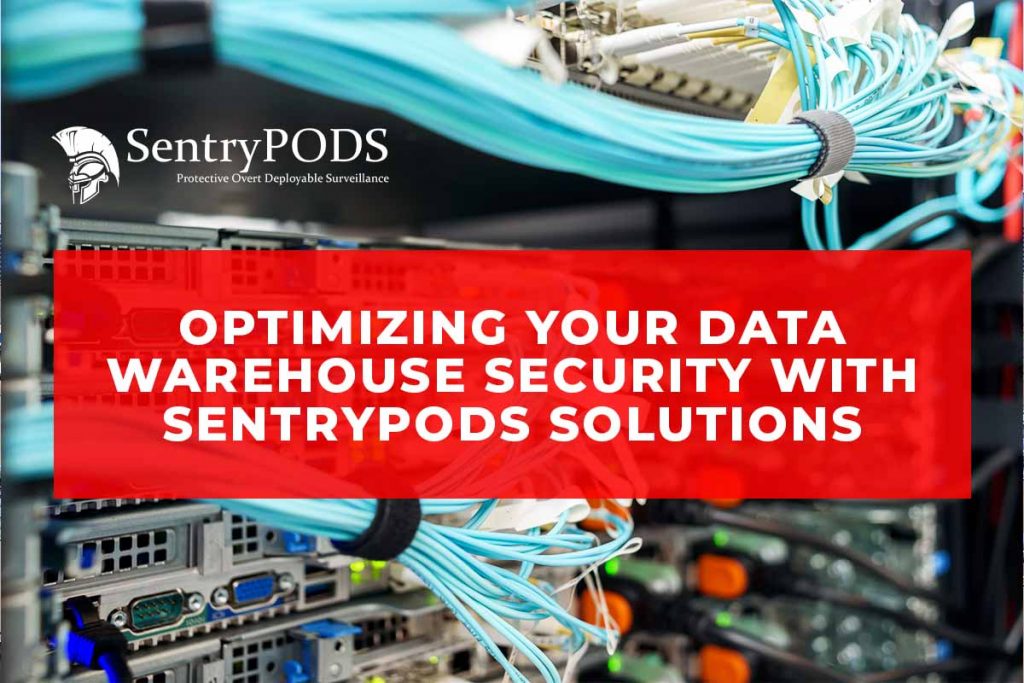Optimizing Your Data Warehouse Security with SentryPODS Solutions
 What are SentryPODS? Why is Data Security important?
What are SentryPODS? Why is Data Security important?
Are you worried about the security of your data warehouse? You’re not alone. As data continues to play an increasingly important role in businesses, maintaining its security has become a top priority. Data warehouses hold large amounts of sensitive information, including customer information, financial data, and trade secrets. Ensuring that this information is protected from cyber threats, such as hacking and data breaches, is crucial. In addition to implementing firewalls and security controls, data warehouse security also involves monitoring access to the data and ensuring that users are only able to access the information that they need to do their jobs. By following best practices for data warehouse security, you can rest assured that your information is protected.
Data security is a critical aspect of any successful business. As you work to secure your company’s confidential information, you must also ensure that your data warehouse — the repository of all enterprise data — remains safe and free from threats. With so much at stake, it’s essential to approach data warehouse security in an effective and strategic way: by optimizing its systems. In this blog post, we’ll discuss why it’s important to optimize the security for your data warehouse, as well as how you can go about doing that.
How SentryPODS help in Data Warehouse Security
Imagine having a powerful tool that can help you protect your cherished data warehouse against possible security breaches. That’s exactly what SentryPODS offer you. SentryPODS are a next-generation approach to data security, providing unparalleled levels of insight into your data and ensuring that would-be attackers don’t get the upper hand. SentryPODS uses advanced algorithms to detect and prevent any potential threats, keeping your data safe and secure. With SentryPODS, you can be sure that your investment in data warehousing is well protected, keeping both your business and your customers’ data safe from any malicious intent.
Step-by-Step Guide on How to Implement SentryPODS for Optimal Data Warehouse Security
SentryPODS are a conceptual approach to securing your data warehouse by using multiple layers of security measures. This guide will provide you with step-by-step instructions on how to implement SentryPODS for optimal data warehouse security.
Step 1: Assess Your Data Warehouse Security Needs
Before implementing any security measures, it’s crucial to assess your data warehouse’s current security status and identify potential vulnerabilities.
- Evaluate your data warehouse architecture and identify critical areas that require additional security.
- Determine the types of data stored in your warehouse and their sensitivity levels.
- Understand the access levels and privileges for different users within your organization.
Step 2: Design Your SentryPODS Architecture
Design a multi-layered security architecture for your data warehouse that includes:
- Network security: Implement firewalls, VPNs, and Intrusion Detection Systems (IDS) to secure your network perimeter.
- Data encryption: Encrypt sensitive data both at rest and in transit using strong encryption algorithms.
- Access control: Set up Role-Based Access Control (RBAC) to manage user permissions and restrict access to sensitive data.
- Monitoring and auditing: Implement logging and monitoring systems to track user activity and detect potential security breaches.
Step 3: Create a Security Policy
Develop a comprehensive security policy that outlines the responsibilities and procedures for maintaining your data warehouse security. This policy should cover:
- User authentication and authorization processes.
- Regular security audits and vulnerability assessments.
- Incident response plans in case of a security breach.
- Employee training on security best practices.
Step 4: Implement Network Security Measures
- Deploy firewalls to protect your data warehouse from unauthorized access.
- Set up a Virtual Private Network (VPN) to secure remote access to your data warehouse.
- Install Intrusion Detection Systems (IDS) to monitor network traffic and detect potential threats.
Step 5: Encrypt Sensitive Data
- Use encryption algorithms like AES-256 or RSA to encrypt data at rest in your data warehouse.
- Enable SSL/TLS encryption for data in transit between your data warehouse and clients or other systems.
Step 6: Implement Access Control
- Define roles and permissions based on the principle of least privilege, granting users only the access they need to perform their job duties.
- Implement Role-Based Access Control (RBAC) to manage user permissions.
- Regularly review and update user permissions to ensure they align with current job responsibilities.
Step 7: Set Up Monitoring and Auditing Systems
- Implement logging and monitoring systems to track user activity within your data warehouse.
- Regularly audit logs to identify potential security threats or policy violations.
- Set up automated alerts to notify relevant personnel of suspicious activity.
Step 8: Conduct Regular Security Audits and Vulnerability Assessments
- Perform regular security audits to evaluate the effectiveness of your security measures and identify potential vulnerabilities.
- Conduct vulnerability assessments to uncover weaknesses in your data warehouse infrastructure and software.
- Remediate identified vulnerabilities and update your security policy accordingly.
Step 9: Train Employees on Security Best Practices
- Provide training on data warehouse security best practices for all employees who interact with the system.
- Conduct periodic refresher courses to keep employees up-to-date on the latest security threats and mitigation techniques.
By following these steps, you can create a robust SentryPODS security architecture that will help protect your data warehouse from potential threats and ensure the privacy and integrity of your sensitive data.
Best Practices for using SentryPODS to protect a Data Warehouse
When it comes to protecting your data warehouse, SentryPODS are a tried and tested solution. By implementing best practices, you can make sure that your SentryPODS are performing at peak efficiency. For starters, you can configure your SentryPODS to receive real-time alerts whenever there is an unauthorized access attempt to your data warehouse. You should enable automatic updates for your SentryPODS, so that you always have the latest security patches in place. You can also configure your SentryPODS to integrate with other security tools to create a comprehensive security solution that covers all your bases. With these best practices in place, you can rest easy knowing your data warehouse is secure.
Benefits of using SentryPODS for Data Warehouse Security
Relying on SentryPODS for data warehouse security can be a great asset to your organization. The software provides protection and detects threats quickly, allowing you to spend less time sorting through logs and more time providing incredible customer service. It also has strong analytics features that give you the ability to continually monitor your environment, staying ahead of risks. Finally, with its cloud-hosted infrastructure, SentryPODS is able to grow with you as your needs evolve. And at the end of the day, protecting your data is sound business and from what I have seen first hand with SentryPODS – it’s just plain smart. So if you are looking for a reliable way to protect your data warehouse – look no further than SentryPODS.
SentryPODS surveillance cameras continue to grow in relevance. Our cameras require no wires, have hot-swappable components, include a cellular connection, can post to solar trailers, and will be set up in 3-5 minutes (video streaming is pre-configured before shipped to your site).

Brent Canfield
CEO and Creator of SentryPODSBrent Canfield, CEO, and founder of Smart Digital and SentryPODS, founded Smart Digital in 2007 after completing a nine-year active-duty career with the United States Marine Corps. During the 2016 election cycle, he provided executive protection for Dr. Ben Carson. He has also authored articles for Security Info Watch.

